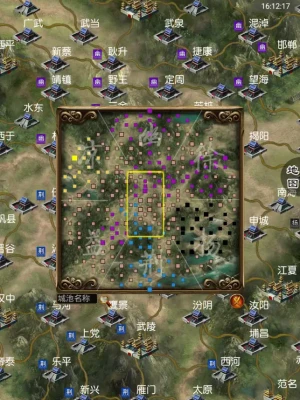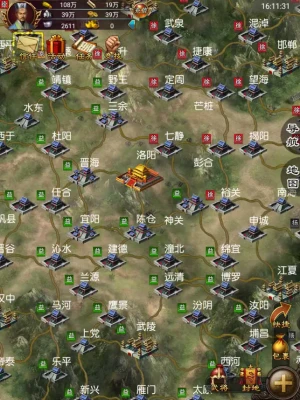
Latest Version
3.28
June 29, 2025
及淮 林
Games
iOS
106.3 MB
0
Free
Report a Problem
More About 叫我三国迷-乱世36计
The Rise of Power in the Late Eastern Han Dynasty: A Strategic Overview
The late Eastern Han Dynasty was a tumultuous period marked by the rise of powerful factions, as external relatives and eunuchs vied for control, leading to a decline in the central authority and widespread suffering among the populace. As various warlords emerged, the realm was divided into six major provinces: Yizhou, Jingzhou, Xuzhou, Yangzhou, Liangzhou, and Youzhou. Each warlord established their own stronghold, engaging in fierce battles to claim dominance over the land.
The Death of Lingdi and the Emergence of Warlords
In the sixth year of the Zhongping era, the death of Emperor Ling triggered a power vacuum, prompting warlords to declare themselves kings and establish their own states. They sought talented strategists and formidable generals to bolster their ranks, leading to a surge of capable individuals stepping into the fray. Despite humble beginnings, many aspired to greatness, aligning themselves with various factions to fight for supremacy in this chaotic landscape.
The Dynamics of City Attributes
Each city on the map possesses unique attributes, categorized into three main types: basic attributes, production attributes, and internal governance attributes.
- Basic Attributes: These include the nation to which the city belongs and the amount of land it encompasses.
- Production Attributes: These determine the resources generated by the city.
- Internal Governance Attributes: These consist of stability, defense, and transportation, which can be enhanced through the efforts of players managing the city.
Creating Your Own Fiefdom
Players can enter any city within their nation and navigate to the outskirts. Here, they can click the "Create Fief" button to establish their own territory. Each player is limited to one fief per city, and the number of fiefs is determined by the city's land availability.
Fiefs can be classified into two types: vacant land and wasteland. The Construction Office manages these fiefs, where vacant land can be developed into buildings, while wasteland requires gold to cultivate before it can be utilized.
Buildings in Your Fief
The buildings available in a fief include:
- Construction Office: A complimentary building that influences the construction speed of other structures.
- Farmland: Generates food resources.
- Lumber Yard: Produces wood resources.
- Mine: Extracts iron ore resources.
- Residential Area: Generates copper coins.
- Barracks: Used to recruit infantry, cavalry, and archers.
Recruiting Generals and Troops
Within the city, players can recruit generals, categorized into ordinary and historical figures. Ordinary generals have standard growth attributes and lack special skills, while historical generals, inspired by renowned figures from the Three Kingdoms period, possess superior attributes and unique skills. Notable historical generals include Guan Yu, Zhang Fei, and Cao Cao, who not only have high attributes but also exceptional abilities.
Once a general is recruited, players can construct barracks in their fief. Barracks automatically gather new recruits, increasing troop numbers. By consuming resources such as food, wood, and iron, players can recruit various troop types, including infantry, cavalry, and archers, each with distinct strengths and weaknesses. The synergy between generals and their respective troop types is crucial for achieving success on the battlefield.
Internal Governance and Military Strategy
With a formidable army at your disposal, players can engage in internal governance tasks at the city gates, which include:
- Building city walls
- Repairing roads
- Conducting security patrols
These activities enhance the city’s internal governance attributes and provide experience rewards. Additionally, players can challenge various faction generals at the capital's military office, engaging in duels with historical heroes.
Expanding Your Territory
Once players have accumulated sufficient resources and developed their generals, they can launch expeditions to conquer neighboring cities, starting with wild cities before advancing to enemy strongholds. Troops will engage in battles outside the target cities, where combat is fully automated. It is essential to ensure that the army is well-supplied with provisions; otherwise, they will be unable to attack. Prior to launching an expedition, players must devise a battle strategy to engage in large-scale confrontations, ultimately striving for unification of the realm.
Conclusion: The Path to Dominance
The late Eastern Han Dynasty presents a rich tapestry of strategy, warfare, and governance. By understanding the dynamics of city attributes, effectively managing resources, and leveraging the strengths of generals and troops, players can navigate this complex landscape. The journey to power is fraught with challenges, but with careful planning and execution, the dream of unifying the realm can become a reality.
Rate the App
User Reviews
Popular Apps










Editor's Choice






























